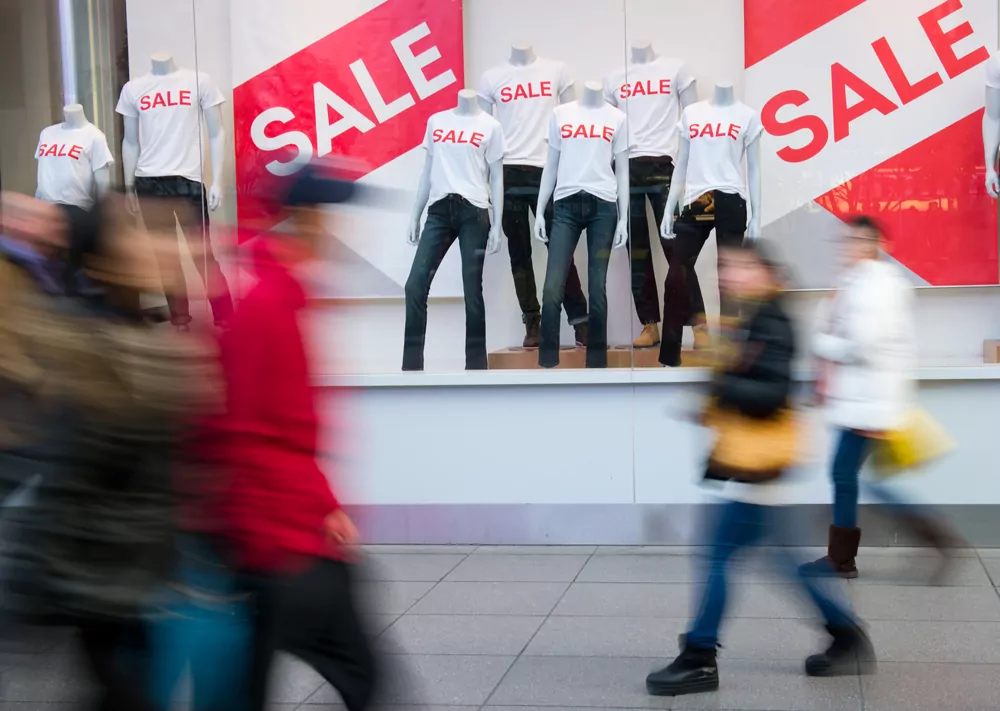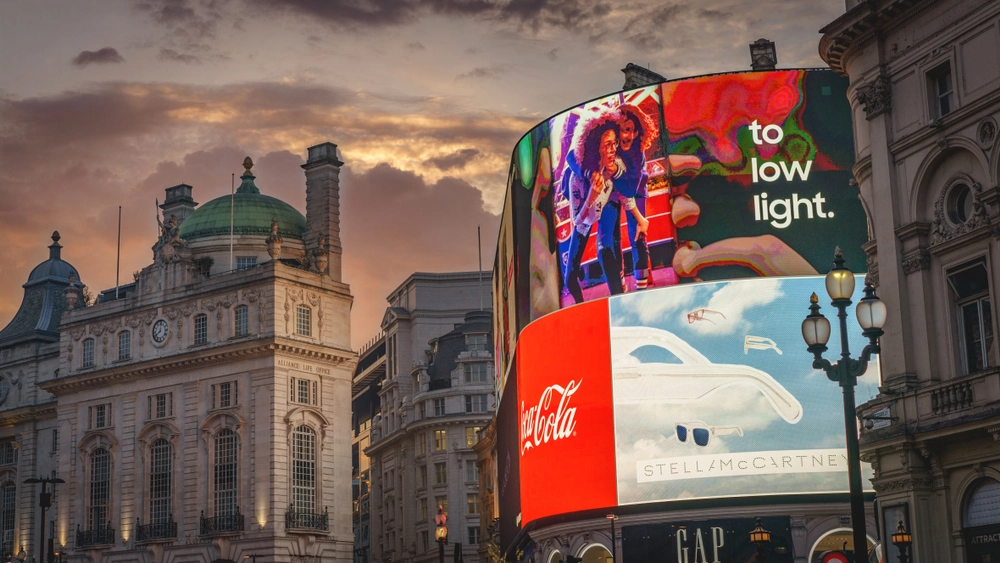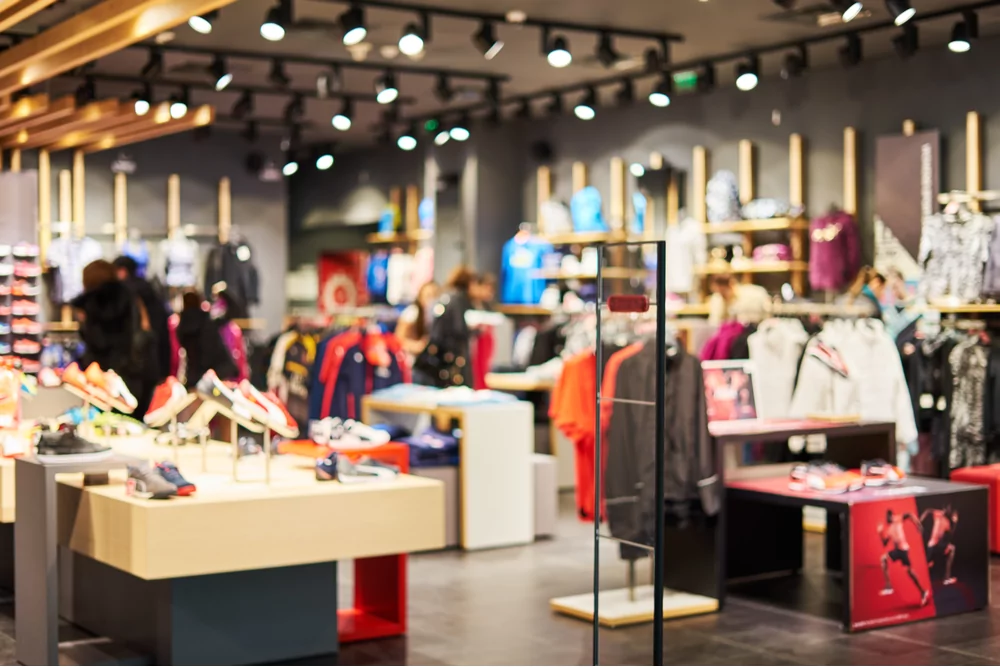
Retail Reduced: April 2023

By Nathan Peacey, Jake Christophersen
28 Apr 2023 | 1 minute read
In this month's review, our experts look at a variety of trends in the retail and consumer sector.
After launching in November 2022, Nike’s web3 metaverse .SWOOSH platform is now launching its first non-fungible token (NFT) digital creation collection, after signing up more than 330,000 members. The initial collection, named Our Force 1, will pay homage to the iconic Air Force 1 design, and is based around two digital “boxes” containing a digital version of the Air Force 1 silhouette (including a design co-created by four Nike fans in January) known as the Classic Remix box and the New Wave box. Upon opening, members can discover which shoe it contains. Nike explained that each NFT will come with a paired 3D file, that holders will be able to use to “express themselves in new ways.” The sportswear giant plans to add “exclusive physical products or experiences” in the future.
Ron Faris, general manager of Nike Virtual Studios, explained in a press release that “we are exploring new ways to tell stories and create relationships while removing the barriers and limitations of physical product”. Nike started to airdrop “posters” to select .SWOOSH users, to unlock buying an Our Force 1 box. General access opens on May 10 to the entire .SWOOSH community to purchase a virtual creation.
When Nike launched its beta version of the .SWOOSH platform in November, it teased that the platform would be used as a resource for Web3 education and as a platform to trade and buy digital collectibles. Items purchased on .SWOOSH can be worn in video games and other immersive experiences.
It will be interesting to see if other sports and fashion retail brands follow suit and transition into the metaverse and web3 – as competitor Adidas have recently expanded its Into the Metaverse NFT with the release of the ALTS by Adidas collection.
This move is crucial for the online retailer to improve customer experience. Shoppers can then select from a range of 22 jeans items to see how different sizes from various brands fit them, with a heatmap indicating where the item sits tight or loose on the avatar they created.
Zalando vice president of size and fit Stacia Carr said: “Our goal with these pilot campaigns is to learn and understand how customers engage with this new technology so we can develop a seamless scalable solution for the future. We can already see that customer engagement with these campaigns increases and, in fact, around half of the customers try more than one size on the avatar.
“We want to support the industry as it continues to adopt and leverage 3D digital design software and workflows to produce fashion. These processes generate digital assets necessary to scale a virtual try-on experience.”
Zalando ran 2 previous pilots, which included select clothing from Puma and Anna Field – this resulted in over 30,000 customers trying out the technology. These numbers will continue to soar if this move proves to be a hit amongst Zalando’s customers.
Ethical cosmetic company, Lush published its report last month – announcing its ‘Big Tech Rebellion.’ Lush addressed the fact that Big Tech’s dominance is creating a significant imbalance within many sectors, especially consumer advertising and retail.
What is the issue?
According to the Harvard Business Review, more than 50% of global online ad spending goes through Meta or Alphabet. In search, Google has more than a 60% share in the US, 75% in Japan and over 90% in Europe, Brazil and India. The reason for this is simply because these companies are able to harness trillions of bytes of data from users each day.
This has brought concerns from regulators, most recently, the Irish Data Protection Commission ruled against uses of data relied on by Meta Ireland “not clearly outlined to users, with insufficient clarity as to what processing operations were being carried out on their personal data, for what purpose(s)”. This is in addition to a number of concerns that the platforms are not properly policed for disinformation or content that might put vulnerable people at risk.
The EU is responding by using the Digital Services Act. It requires these companies to do risk management, conduct external and independent auditing, share data with authorities and researchers and adopt a code of conduct by August this year. (You can read our take on this legislation here.)
Lush states in its report that, instead of looking to innovate using pre-existing data, Big Tech intend on collecting more for no good reason with a majority of consumers believing that social media companies are not effectively protecting their data from third parties.
They propose that a move to a decentralised web is needed, using technologies such as blockchain, to create peer to peer connections and transactions away from the dominating figures of Big Tech. Instead of relying on centralized servers and companies to store and access user data, decentralized platforms can use blockchain technology to store data more securely, giving users more control over their data – essentially, this is what they call Web3.
“Most companies make it convoluted and difficult for people to gain an understanding of what’s being collected – and they do so deliberately. But Web3 and the blockchain promise to reset the balance, helping people derive value from sharing personal data.”
Lush is envisioning an open and accessible digital world, enhanced by these technologies that benefits users and communities, promoting trust. There is, of course, a long way to go, but we will be keeping a close eye on all developments in this area.
One of the big intellectual property stories for retail this month is Lidl’s win over Tesco in a trademark dispute concerning Lidl’s logo and Tesco’s Clubcard logo. Most of us will be familiar with Lidl’s logo: a yellow circle on a blue background with “LIDL” in the centre. Some will have noticed the red outline on the outside of the circle.
The High Court is of the opinion that Tesco’s Clubcard logo (yellow circle with black text in the centre on a blue background) is a bit too similar. In fact, it held that Tesco had copied Lidl’s logo and is due to issue an injunction preventing Tesco from using it in future. That said, Tesco intend to appeal the decision and have asked the court to put the brakes on any necessary amendments to its logo until the appeal has been heard. So, this probably is not the last we’ll be hearing about this particular dispute, which was brought in February, but according to Lidl, has been ongoing for over three years.
Justice Joanna Smith who handed down the court’s judgment said that Tesco had taken unfair advantage of Lidl’s reputation for discounted value and the Clubcard logo intended to influence shoppers’ spending, by associating the style and colour scheme with Lidl’s logo. On the flip-side, the judge sided with Tesco’s argument that Lidl had acted in bad faith when it sought to trademark the yellow circle on a blue background. In addition, she did not consider that Tesco had copied the logo deliberately, but copying had taken place, nonetheless.
No doubt an interesting case for those involved with IP, but the dispute also highlights the heated competition amongst supermarkets and the pressure to hang on to its customers in a time of significant economic upheaval, caused by the ongoing cost-of-living crisis. The Financial Times reported that “Aldi and Lidl together have 17 per cent of the UK grocery market, although Tesco still dominates, with a 27 per cent slice. In 2015, Lidl had 3.5 per cent of the UK market and 600 stores, but by 2022 it had 7.2 per cent.”
For those interested in reading the court’s judgment, it can be found here.
Planet Organic, known for its organic food and drinks, as well as health and body care products was saved from collapse late this month by its founders, Renée Elliott, who managed to gather sufficient backing from private investors to spearhead a rescue deal for the struggling retailer. Planet Organic is said to have been struggling with losses over the past two financial years, following reduced footfall during the pandemic.
Several other companies, including Sainsbury’s and Holland & Barratt had previously expressed an interest in snapping up the business – however, this interest only extended to the company’s brand and intellectual property. Neither party wished to acquire any of its 14 shops, raising fears that 360 job losses could be on the cards. Fortunately, this was not to be on this occasion.
Interestingly, what this episode has shown is that potential buyers are increasingly more interested in brand and IP, whilst being hesitant to take on the brick of mortar, given the high rents and rates that are involved in doing so. Further, buying IP out of administration deals can often result in a lower payout in exchange for a raft of benefits, including brand reputation, research and developments, as well as trademarks and patents. The Business Sale Report considers that failing to consider the gains that can be made from buying IP can be a ‘major oversight’.
We have seen several examples of companies’ focus on IP when buying out struggling businesses. At the end of January, Tesco bought out the IP and brand of Paperchase in a pre-pack administration deal which risked approximately 1,000 jobs and led to mass store closures. One of the issues underlying the Paperchase collapse is said to have been its overambitious amount of store openings. Following the deal, Tesco was expected to boost sales through diversifying its offering in stores, as well as online, thanks to Paperchase’s strong brand.
In November last year, Next bought Made.com’s brand, website and intellectual property for £3.4 million. This deal resulted in 400 redundancies. Made.com had built up a strong online brand, popular with a younger audience, but had struggled with supply chain issues during the pandemic, ultimately leading to its collapse. The deal was seen as a chance for Next to extend its offering to a young audience with a strong brand name.
It will be interesting to see whether these types of deals continue to gather pace, particularly in a world where online presence is key and where retailers are grasping at new opportunities to improve customer experience through technologies such as the Metaverse.











